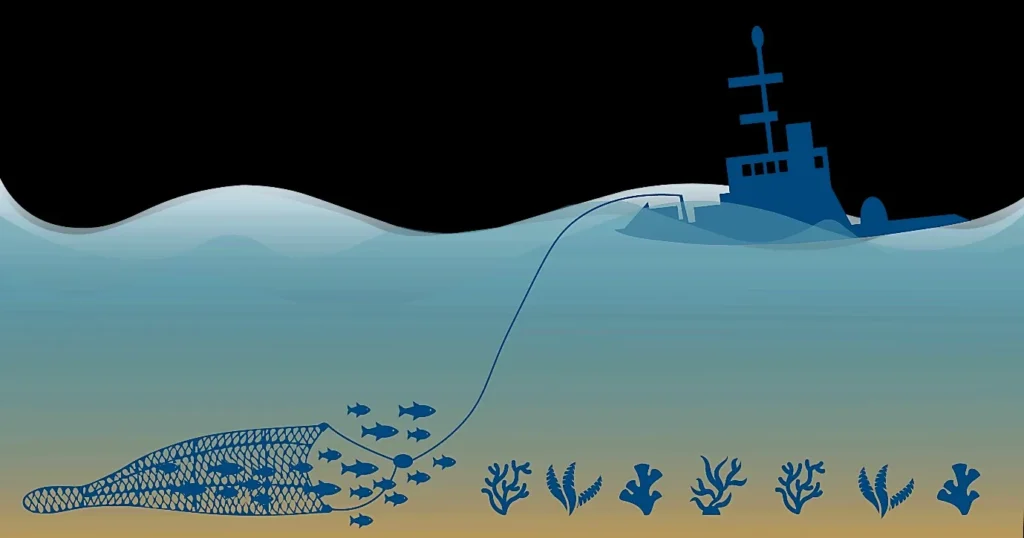A recent study sheds light on the carbon emissions associated with the Bottom trawling, raising concerns about its contribution to atmospheric carbon and implications for climate change.
Key highlights of the study:
- Nearly 25% of the world’s wild-caught seafood is obtained through bottom trawling.
- Bottom trawlers, dragging heavy nets over the seafloor, damages the marine ecosystems and leads to bycatch issues.
- Earlier estimates have stated that the bottom trawling releases about 1 billion metric tons of carbon annually, as compared to global aviation emissions.
- 55-60% of the stirred-up carbon enters the atmosphere within 9 years, which is nearly double the annual emissions of the entire global fishing fleet’s fuel combustion.
- Bottom trawling exhibits higher carbon emissions in specific regions, including the East China, Baltic, North, and Greenland seas.
- There is a potential of elevated activity and carbon release in Southeast Asia, the Bay of Bengal, Arabian Sea, parts of Europe, and the Gulf of Mexico, although data gaps exist.
About the Bottom trawling:
- The Bottom trawling is a fishing method that involves dragging a large, weighted net along the ocean floor to capture fish and other marine organisms.
- It can catch fishes such as whitefish like cod, haddock, hoki and hake, and flatfish such as halibut and sole.
- Prawns, shrimp and squid can also be caught through this method.
- It is a widely adopted fishing technique globally, which contributes significantly to the world’s seafood supply.
- It is also referred to as “dragging“.
- Efforts have been made to regulate bottom trawling through international agreements, such as the United Nations General Assembly resolutions and regional fisheries management organizations.
Environmental Impact:
- Destruction of Habitat: Bottom trawling causes severe damage to sensitive marine habitats, such as coral reefs and seamounts, by physically scraping the ocean floor.
- Biodiversity Loss: The method results in unintended bycatch, leading to the depletion of non-targeted species, including juvenile fish and marine organisms crucial for the ecosystem.
- Long-lasting Effects: The recovery of habitats from bottom trawling can take decades or even centuries, impacting the overall health of marine ecosystems.
Ref: Source
| UPSC IAS Preparation Resources | |
| Current Affairs Analysis | Topperspedia |
| GS Shots | Simply Explained |
| Daily Flash Cards | Daily Quiz |



